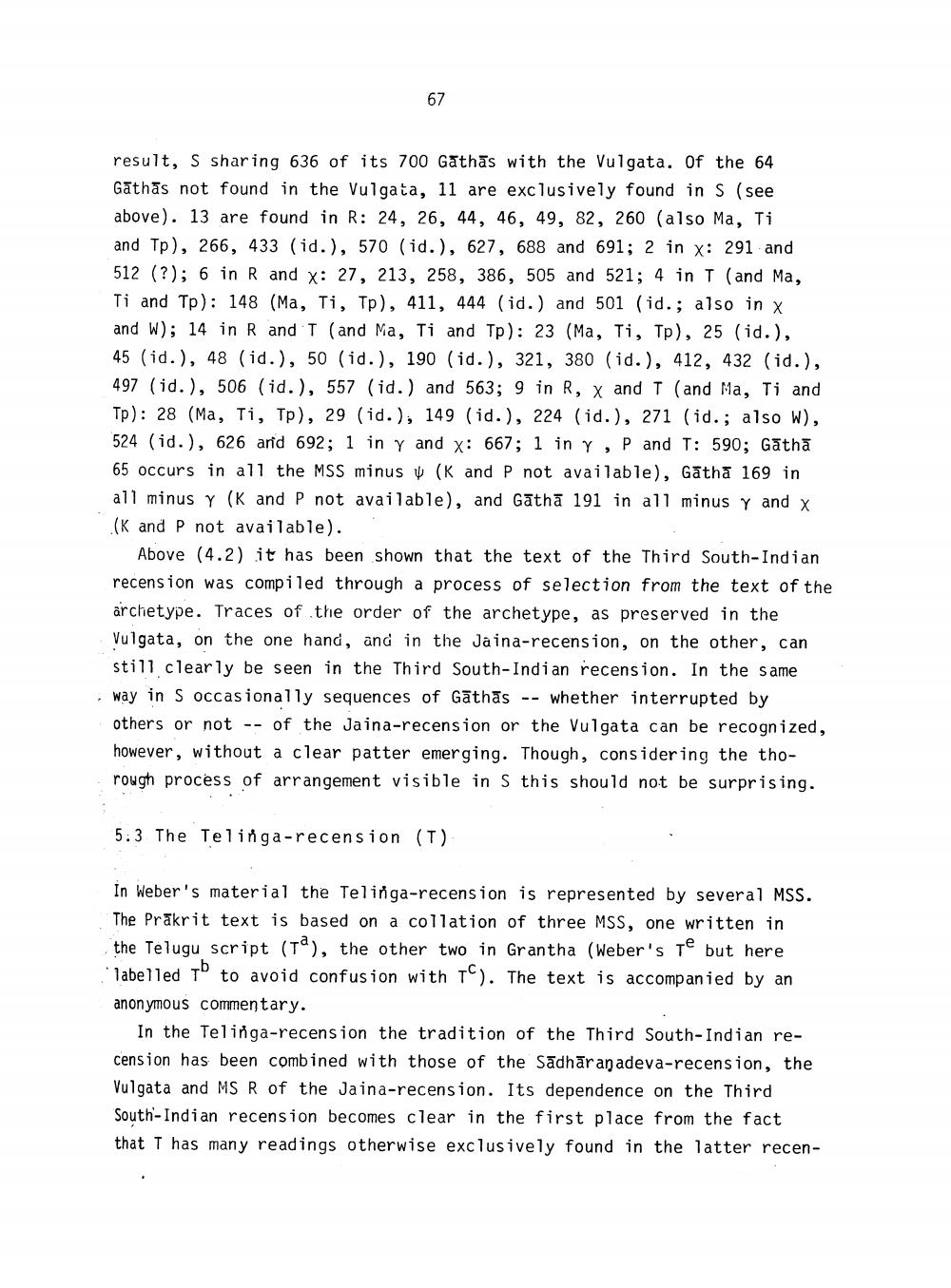________________
result, s sharing 636 of its 700 Gathās with the Vulgata. Of the 64 Gathās not found in the Vulgata, 11 are exclusively found in s (see above). 13 are found in R: 24, 26, 44, 46, 49, 82, 260 (also Ma, Ti and Tp), 266, 433 (id.), 570 (id.), 627, 688 and 691; 2 in x: 291 and 512 (?); 6 in R and X: 27, 213, 258, 386, 505 and 521; 4 in T (and Ma, Ti and Tp): 148 (Ma, Ti, Tp), 411, 444 (id.) and 501 (id.; also in x and W); 14 in R and T (and Ma, Ti and Tp): 23 (Ma, Ti, Tp), 25 (id.), 45 (id.), 48 (id.), 50 (id.), 190 (id.), 321, 380 (id.), 412, 432 (id.), 497 (id.), 506 (id.), 557 (id.) and 563; 9 in R, X and T (and Ma, Ti and Tp): 28 (Ma, Ti, Tp), 29 (id.), 149 (id.), 224 (id.), 271 (id.; also w), 524 (id.), 626 and 692; 1 in Y and x: 667; 1 in Y, P and T: 590; Gatha 65 occurs in all the MSS minus v (K and P not available), Gāthā 169 in all minusy (K and P not available), and Gathā 191 in all minus y and x (K and P not available).
Above (4.2) it has been shown that the text of the Third South-Indian recension was compiled through a process of selection from the text of the archetype. Traces of the order of the archetype, as preserved in the Vulgata, on the one hand, and in the Jaina-recension, on the other, can still clearly be seen in the Third South-Indian recension. In the same way in s occasionally sequences of Gāthas -- whether interrupted by others or not -- of the Jaina-recension or the Vulgata can be recognized, however, without a clear patter emerging. Though, considering the thorough process of arrangement visible in s this should not be surprising.
5.3 The Telinga-recension (T)
In Weber's material the Telinga-recension is represented by several MSS. The Prākrit text is based on a collation of three MSS, one written in the Telugu script (To), the other two in Grantha (Weber's Te but here Tabelled to to avoid confusion with TC). The text is accompanied by an anonymous commentary.
In the Telinga-recension the tradition of the Third South-Indian recension has been combined with those of the Sadhāraṇadeva-recension, the Vulgata and MS R of the Jaina-recension. Its dependence on the Third South-Indian recension becomes clear in the first place from the fact that T has many readings otherwise exclusively found in the latter recen




